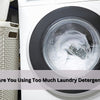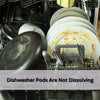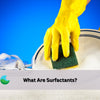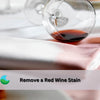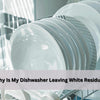The Dirty Truth About Toilet Cleaners (And Safer Way to Clean)
- by Brodie Cook
Why This Matters More Than You Think
Toilet cleaners seem harmless. You pour, scrub, flush and move on. But those bottles often hold more than just soap and scent.
Some ingredients are known for their strong fumes or warning labels. Others might hang around in the air or wash straight into the water. Most people don’t think much about it. This blog shows what’s often overlooked and what you can use instead.
The (Hidden) Ingredients in Common Toilet Cleaners
Most toilet cleaning products rely on strong chemicals to get the job done. You’ll often find names like hydrochloric acid or chlorine on the bottle. These are used to cut through grime and stains.
What doesn’t always stand out are the warnings. Some labels mention eye or skin irritation. Others advise using the product in a well-ventilated space. Some even list ingredients that sound more at home in a lab than a bathroom.
One group of chemicals found in some disinfectants and toilet cleaners is called alkylphenol ethoxylates. They don’t break down easily and have been found in water systems long after use, according to Science Direct.
Most people never stop to check what’s actually in the bottle.
What to Look for on the Label
If you're checking the bottle and see words like bleach or hydrochloric acid that’s a good reason to keep looking. These are strong cleaners but they come with risks. Some can burn skin or cause breathing problems if the space isn’t aired out.
Also keep an eye out for long names that are hard to pronounce. That usually means synthetic ingredients that don’t break down well once they leave the bowl. If there are warnings about eye contact or skin damage it’s a sign the product might be doing more than just cleaning.
A better pick is one with clear terms like plant based or septic safe. Labels that say non toxic or mention essential oils can also point to something gentler. If the label feels too busy or full of warnings that’s something worth thinking about before dropping it in the trolley.
How Toilet Cleaners Pollute Your Air Inside Your Home
A recent research study tested what happens to the air after using toilet cleaners. The results were surprising. Air quality dropped fast and stayed that way for hours. This happened in a regular home using common products.
The study picked up high levels of tiny dust particles and CO2 right after cleaning. These can affect health and safety by making the air harder to breathe and increasing the risk of respiratory discomfort.
Some cleaners pushed the air quality into the hazardous zone. This means the air inside the bathroom became harmful not long after use. The readings were based on the Air Quality Index which shows how polluted the air is. In this case, the numbers jumped to levels that can trigger headaches and make it harder to breathe. These effects lasted for up to two hours.
The risk grows in smaller bathrooms or spaces with poor airflow. Harmful fumes can build up fast and hang around. Even after a rinse the air may not clear right away. Just walking in can expose you to a mix of chemical vapours still trapped inside.
What This Means for Your Family
Using strong cleaners now and then might not seem like much. But even once a week can start to build up. The more often it’s used the more chemical exposure adds up in the air and in the water.
This matters more when you’ve got kids at home. Pets too. They spend time close to the floor and the toilet. Anyone with asthma or allergies can also feel the effects faster. You might not notice anything right away. Some fumes don’t smell strong but they still hang in the space after you’re done.
That’s why more people are starting to think about the health issues and environmental impact of cleaning agents. It’s not just about what they clean. It’s also about what they leave behind.
Where It Goes After You Flush
Flushing feels like the end of it. The bowl looks clean and the smell is gone. But what goes down the drain doesn’t just stop there.
In most homes the water heads into a sewer system. From there it travels to a treatment plant where it gets processed before being released. But not all chemicals are easy to remove. Some can make it through and end up in rivers or soil further down the line.
Better Ways to Keep Your Toilet Clean (Without Harsh Chemicals)
There’s no rule that says toilet cleaning has to come with strong fumes or warning labels. You can still get great results without all the extra stuff that hangs in the air or washes down the drain.
Our toilet cleaning sheets are one option that makes it easy. They come in a slim pack and work just like a cleaner would but without the harsh ingredients. No bleach, no phosphates and still strong enough to cut through stains. Just drop in a sheet give the bowl a good brush and flush. That’s it.
They’re safe for septic tanks and come with a fresh eucalyptus scent that leaves the bathroom smelling clean without being overpowering. The sheets also come in plastic free packaging which helps cut down on waste in the cupboard and in the bin.
Simple swaps like this can make a real difference without changing how you clean.

 Dishwashing
Dishwashing Laundry
Laundry Bundles
Bundles Surfaces
Surfaces Toilet
Toilet Handsoap
Handsoap Multi-Purpose
Multi-Purpose Floor
Floor

